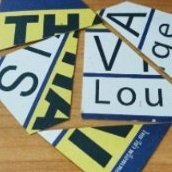[Cambodia] Top ten stories of the year
-
Recently Browsing 0 members
- No registered users viewing this page.
-
Topics
-
-
Popular Contributors
-
-
Latest posts...
-
172
Report Swede, Aussie Found Dead Hours Apart in Same Pattaya Condo
No, I know you and those two are by your words here. I',m an empath. I actually care for my family, as I've shown, yet you and those other fools still can't see the forest for the trees. And I've told the truth all along, but pussy whipped or abusive men towards women can't believe they're losers compared to a real man, so they'll argue forever, thinking someone besides others like them will agree. Joining your little group of misfits isn't something to be proud of but ashamed. Putting down a man who's here only until he can get his daughter out of this place to a better place is a despicable cowardly act, and if we all knew just how you were in real life, I'm thinking most would spit in your eyes. -
66
Truevisions loses EPL
They also have some pre season games and The USA tournament. It looks like you can subscribe on the 3BB internet app at a discount. But after hours getting to work on the HBO app I am rather reluctant to change anything. The erevediicii on Sport 1 Chanel looks really good picture. -
197
Travel Chiang Mai Crowned Asia's Best City, Bangkok Shines in Third
They should work to rid the air pollution else ChiangMai will be ruined in no time -
26
Winner or all losers
You do vote, though probably useless. Not for everyone, but my solution was to stop producing taxable income, become a blight on my country's tax system, and get back all the taxes I ever paid into that system, along with the contribution of my employers. Leave the country to avoid paying any more taxes of any kind. Actually worked out pretty good for me, over the past 25 year, as I think I've gotten back ever tax dollar I ever contributed, and then some. Still getting more every month. -
5
Treat The Missus to a New One
Perfect for your Mother-in-Law... https://maps.app.goo.gl/PxAzzsXMdkM8qua76 -
21
Another brilliant idea from the Trump administration
Sugar tastes better, thanks Don
-
-
Popular in The Pub

.thumb.jpg.3ee24d9400fb02605ea21bc13b1bf901.jpg)

.thumb.jpeg.d2d19a66404642fd9ff62d6262fd153e.jpeg)









Recommended Posts
Create an account or sign in to comment
You need to be a member in order to leave a comment
Create an account
Sign up for a new account in our community. It's easy!
Register a new accountSign in
Already have an account? Sign in here.
Sign In Now